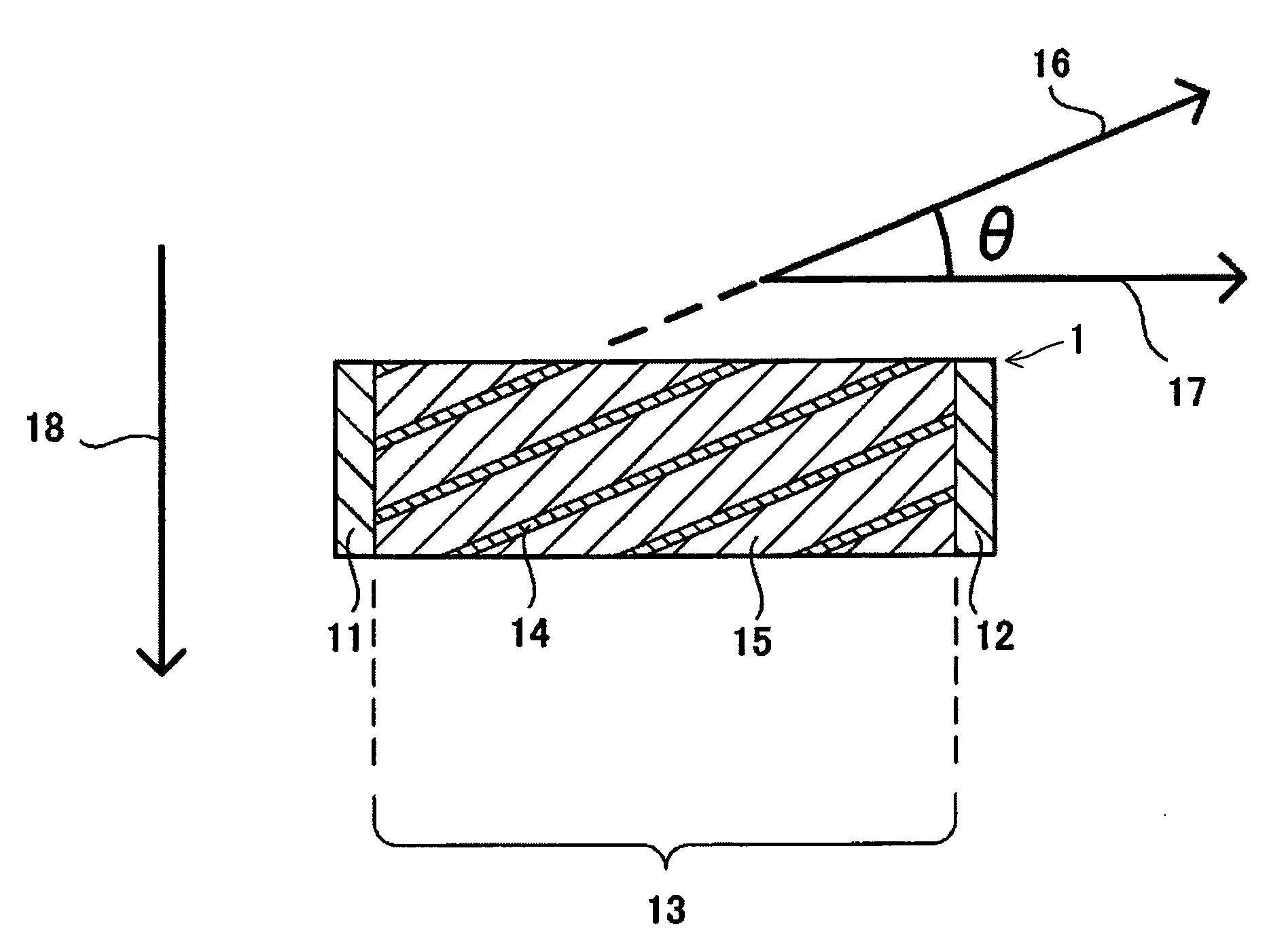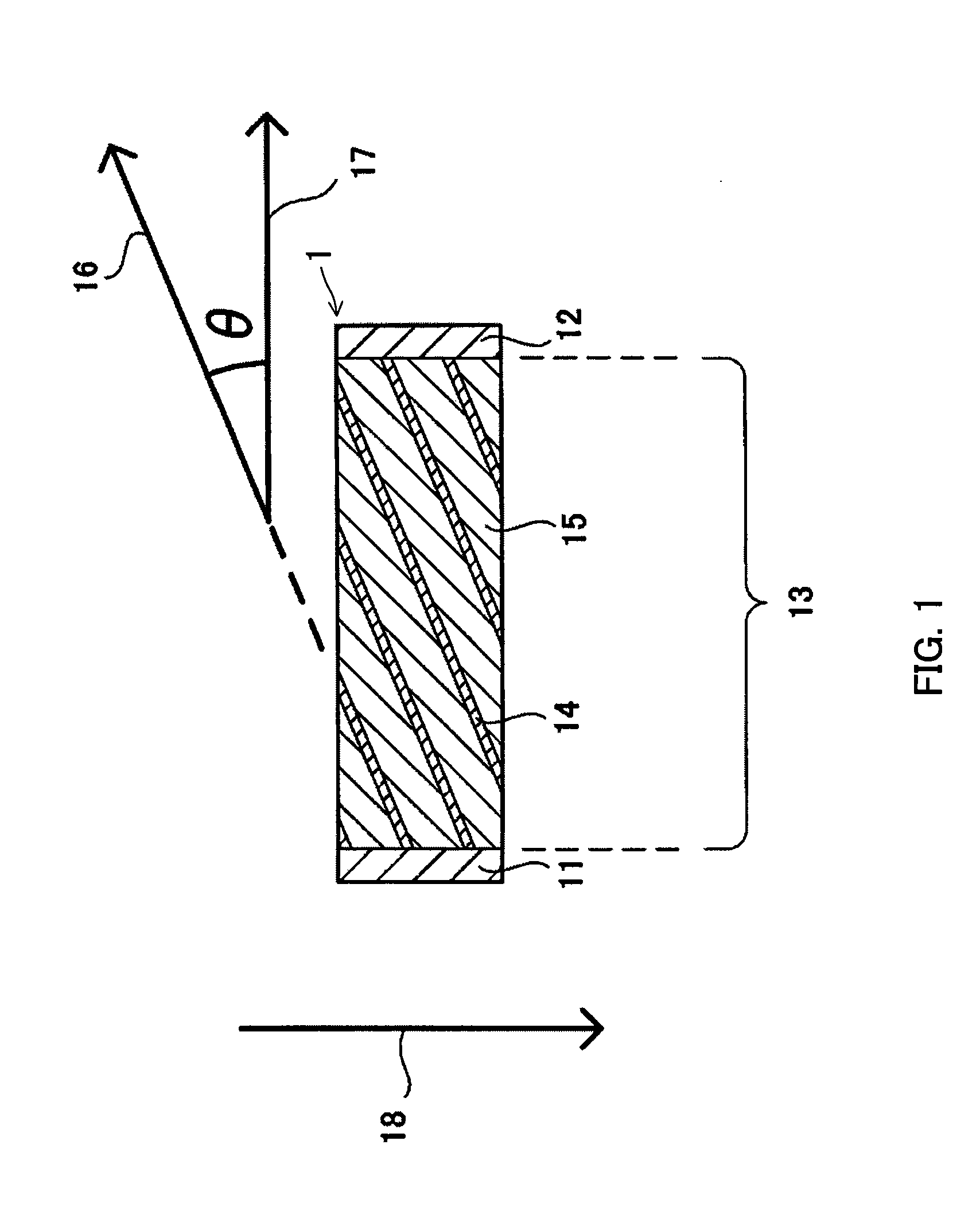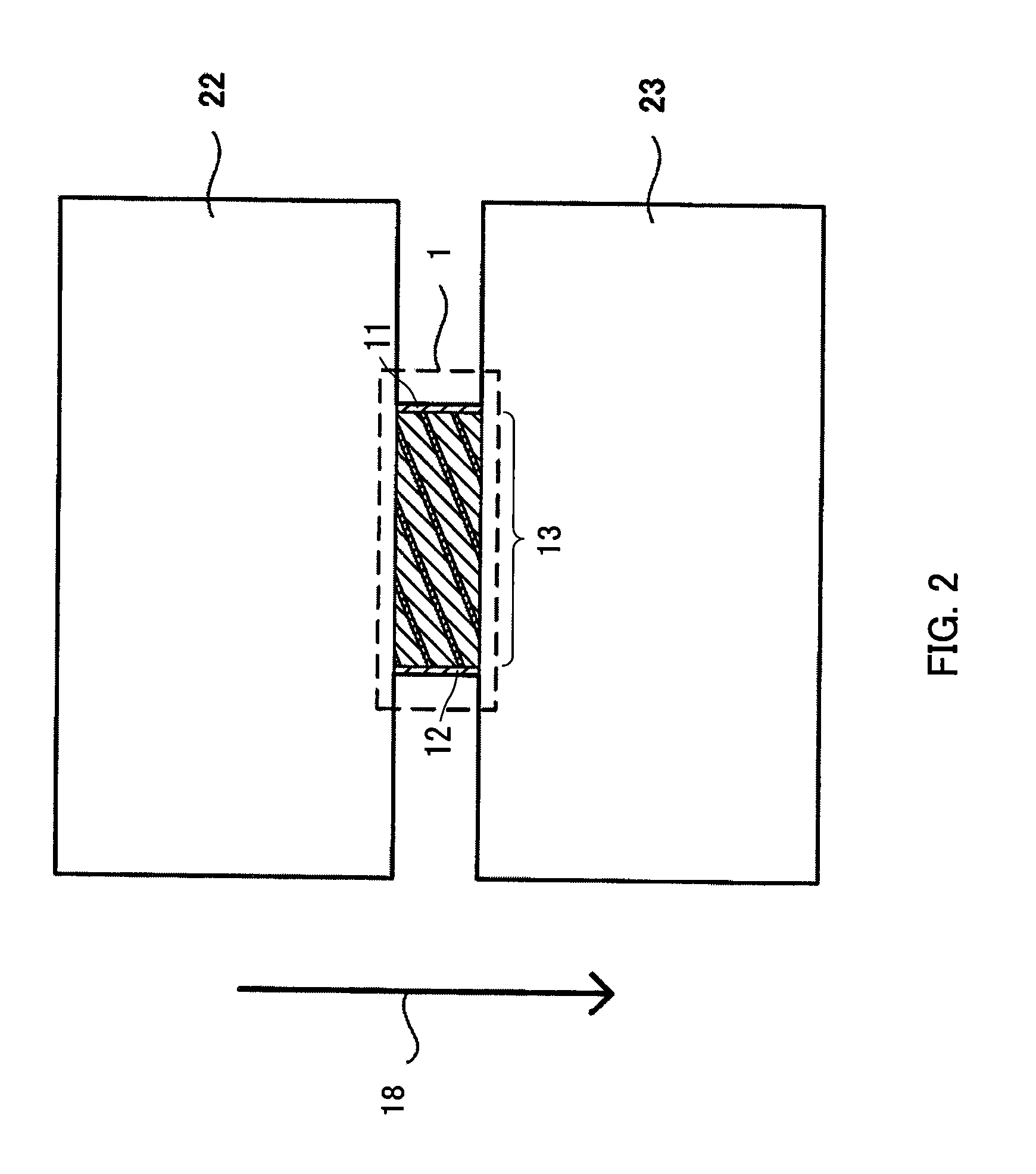Power generation method using thermoelectric element, thermoelectric element and fabrication method thereof, and thermoelectric device
a technology of thermoelectric elements and fabrication methods, applied in the manufacture/treatment of thermoelectric devices, cell components, electrochemical generators, etc., can solve the problems of insufficient thermoelectric performance of conventional thermoelectric materials for use in a wide range of practical applications, and achieve the effect of improving energy conversion efficiency, superior thermoelectric properties, and promoting thermoelectric generation
- Summary
- Abstract
- Description
- Claims
- Application Information
AI Technical Summary
Benefits of technology
Problems solved by technology
Method used
Image
Examples
example 1
[0066]In Example 1, Bi and several kinds of metals (Au, Ag, Cu, or Al) were used to prepare a thermoelectric element 1 as shown in FIG. 1, and thermoelectric properties of the element were evaluated.
[0067]First, a Bi thin film having a thickness of 2.5 μm was formed by a sputtering method on the both surfaces of a metal foil (Au foil, Ag foil, Cu foil, or Al foil) having a size of 100 mm×100 mm and a thickness of 95 μm. A resulting sheet of Bi film / metal foil / Bi film was cut into small strips each having a size of 5 mm×50 mm, and 200 sheets of these strips were laminated and were subjected to compression bonding with applied heat at 250° C. for 1 hour, under a reduced pressure of 10−4 Pa and a load of 100 kg / cm2 applied in the direction the strips were laminated. This was followed by cutting and grinding to obtain a layered original plate having a size of 3 mm×48 mm and a thickness of 20 mm. Observation of a cross section of the original plate with a scanning electron microscope (SE...
example 2
[0075]According to the procedure of Example 1, elements with different thickness ratios of metal layer and Bi layer were prepared using Ag or Cu for the metal layer. Elements were prepared with the slant angle θ fixed at 30°, and by varying the thickness of the metal foil used for preparation at 70 μm, 80 μm, 90 μm, 95 μm, 98 μm, and 99 μm so that the periodically occurring metal-Bi layer had a thickness of 100 μm. Accordingly, the proportions in thickness of the Bi layer in the laminate of the resulting element were 30%, 20%, 10%, 5%, 2%, and 1%, respectively.
[0076]Table 2 below represents results of evaluation of power factor of the elements. The evaluation was carried out in the same manner as in Example 1.
TABLE 2Changes in power factor (μW / (cm · K2)) of the elementaccording to thickness proportion of Bi layer in the laminateProportion in thickness of Bi layer in laminate (%)302010521Ag8011015817511650Cu8010515516811040
[0077]As shown in Table 2, large power factors were obtained ...
example 3
[0078]According to the procedure of Example 1, elements were prepared by varying the slant angle θ and the thickness ratio of metal layer and Bi layer, using Cu for the metal layer. The slant angle θ was varied in 5° increment from 20° to 50°. The thickness of the Cu foil used for preparation was fixed at 20 μm, and the thickness of the Bi thin film formed on the surfaces of the Cu foil was varied at 0.25 μm, 0.5 m, 1 μm, 2 μm, 4 μm, and 8 μm.
[0079]Table 3 below represents results of evaluation of power factor of the elements. The evaluation was carried out in the same manner as in Example 1.
TABLE 3Changes in power factor (μW / (cm · K2)) of the element according to slant angle θ andthickness proportion of Bi layer in the laminate--Cu was used for the metal layerSlant angle θ(°)20253035404550Thickness of Bi layer8(μm) / 29(%)78828480726048in forming laminate4(μm) / 17(%)1001151181121089278(μm) / proportion in2(μm) / 9(%)118140152148146130110thickness of Bi layer in1(μm) / 5(%)105140160162158148...
PUM
| Property | Measurement | Unit |
|---|---|---|
| slant angle | aaaaa | aaaaa |
| slant angle | aaaaa | aaaaa |
| power factor | aaaaa | aaaaa |
Abstract
Description
Claims
Application Information
 Login to View More
Login to View More - R&D
- Intellectual Property
- Life Sciences
- Materials
- Tech Scout
- Unparalleled Data Quality
- Higher Quality Content
- 60% Fewer Hallucinations
Browse by: Latest US Patents, China's latest patents, Technical Efficacy Thesaurus, Application Domain, Technology Topic, Popular Technical Reports.
© 2025 PatSnap. All rights reserved.Legal|Privacy policy|Modern Slavery Act Transparency Statement|Sitemap|About US| Contact US: help@patsnap.com



